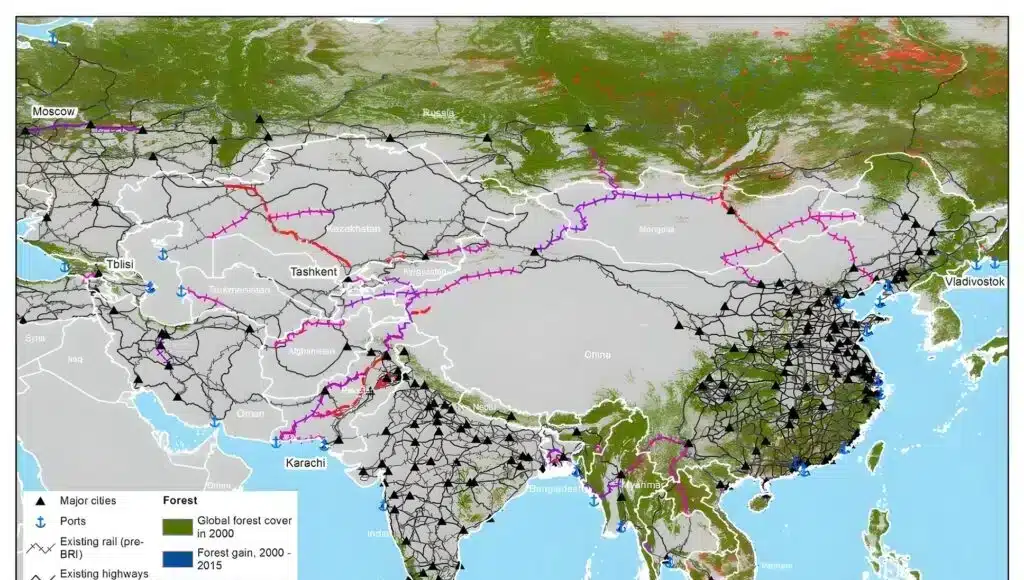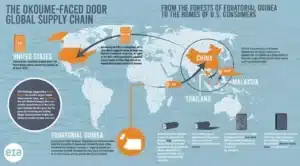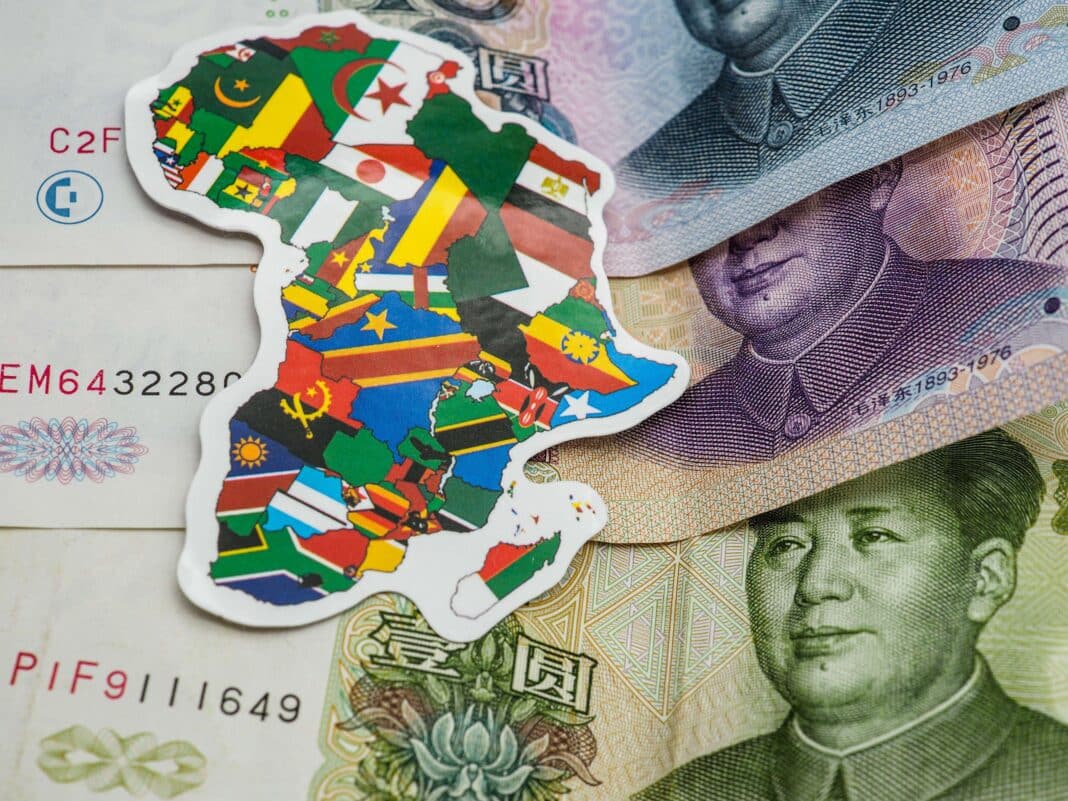China (and India) are now targeting Kenya and its 100,000-plus hectares of Blue Gum tree plantations, fueling a new wave of timber plants that are now processing veneers, which are expanding rapidly post-pandemic.
That is according to The Nation, Africa’s largest independent media publication, with the Timber Manufacturers Association of Kenya revealing that Chinese and Indian nationals are competing with each other to process veneers in Chepseon, in Kericho Country, Kongasis in Uasin Gishu Country, Bungoma, Kisii, Isiolo Meru and Nyeri.
“Chinese and Indian investors are now peeling, on average, 250-to-300 tonnes of wood per day. They are distributed across the country; if we do not take precautions, Kenya might be a desert sooner than we think.”
The Timber Manufacturers Association of Kenya on the surge of Chinese and Indian nationals now investing heavily in veneer production and export.
Last year, Wood Central reported that Africa has emerged as critical for the future of global timber resources with the FAO reporting that Africa, home to 17% of the world’s forests, only has 9% of the forest area is “in use”, with forests contributing just 7% of total forest removals and 1.5% of the world’s industrial output.
As a result, Kenya’s President William Ruto has lifted a six-year ban on timber harvesting “long overdue” to help create jobs – with on-the-ground foresters pushing to reform “archaic laws” to “weed out” exploitative trade routes and curb illegal logging across the region.
Now, the Nation reports that exporters are setting up large warehouses across Kenya, producing thousands of cubic metres of plywood and blockboards under armed guard and then exporting them from the Port of Mombasa every week.
“We buy red and white eucalyptus trees from farmers, which we produce and export to China,” according to Dennis Kipkoech, a translator ordered by Chinese bosses to take journalists through one of the consignment factories in Gitari, Gilgil, a town located between Naivasha and Nakuru and along the Nairobi – Nakuru highway.
“It has a willing buyer and a willing seller arrangement on any given day we may receive ten trucks of logs that we can process on the same day,” Mr Kipkoeach translated. “We are buying from everywhere, and right now, our source is from the Nyandarua region,” he said, adding that the number of investors is expected to surge in the coming years – with China looking to strengthen the African routes of its Belt and Road initiative.
“The Chinese government is providing incentives for their citizens to work outside the country, so for those who understand Mandarin, we can work alongside them because most Kenyans do not speak or understand Chinese,” Mr Kipkoeach said, adding that Chinese nationals now living in self-contained quarters on-site made from iron sheets: “Everything can be brought down, packed up and shipped away at any time,” he said.

Wood Central understands that China has invested heavily in African forestry, with more than 4.2 tonnes of timber exported to China over the past decade. The surge in Chinese-bound exports comes at a time when European exports have halved from $US1.4 billion to $US600 million in value, according to the Central Africa Forest Observatory.
According to local timber manufacturers, like Njuguna Ng’ang’a in Nakuru, these exporters are now incentivising farmers to ramp up “uncontrolled overharvesting of eucalyptus,” which in turn is damaging the supply of timber used in local industries, including power poles, firewood, and high-value marine plywood.
“The Chinese have been in this country for four years now,” Mr Njuguna said, adding that “they were expelled in Uganda and Tanzania in 2023 and 2021, respectfully, because of the overexploitation of eucalyptus and other exotic tree species in those countries.”

For the Kenyan Association of Manufacturing, the influx of Chinese-owned and managed veneer processing facilities is “criminal” and “international sabotaging” Kenya’s commitment to growing its timber economy and meeting tree planting goals.
“We recommend the veneer exports need to stop. Why it is still going on is your guess is as good as mine. It is criminal and international sabotage of the 15 billion tree agenda,” explains Kaberia Kamencu, the Timber, Wood and Furniture Sector Chair at the Kenya Association of Manufacturers.
“These Indian and Chinese nationals are doing jobs Kenyans can do. In these factories, a Chinese person is driving a forklift, and they do not even have a work permit,” Mr Kamencu said.
- To learn more about Chinese trade through Africa – and how it invests in Africa to meet the global demand for timber products, click here for Wood Central’s article on China’s “Manufacturing Black Box.”






